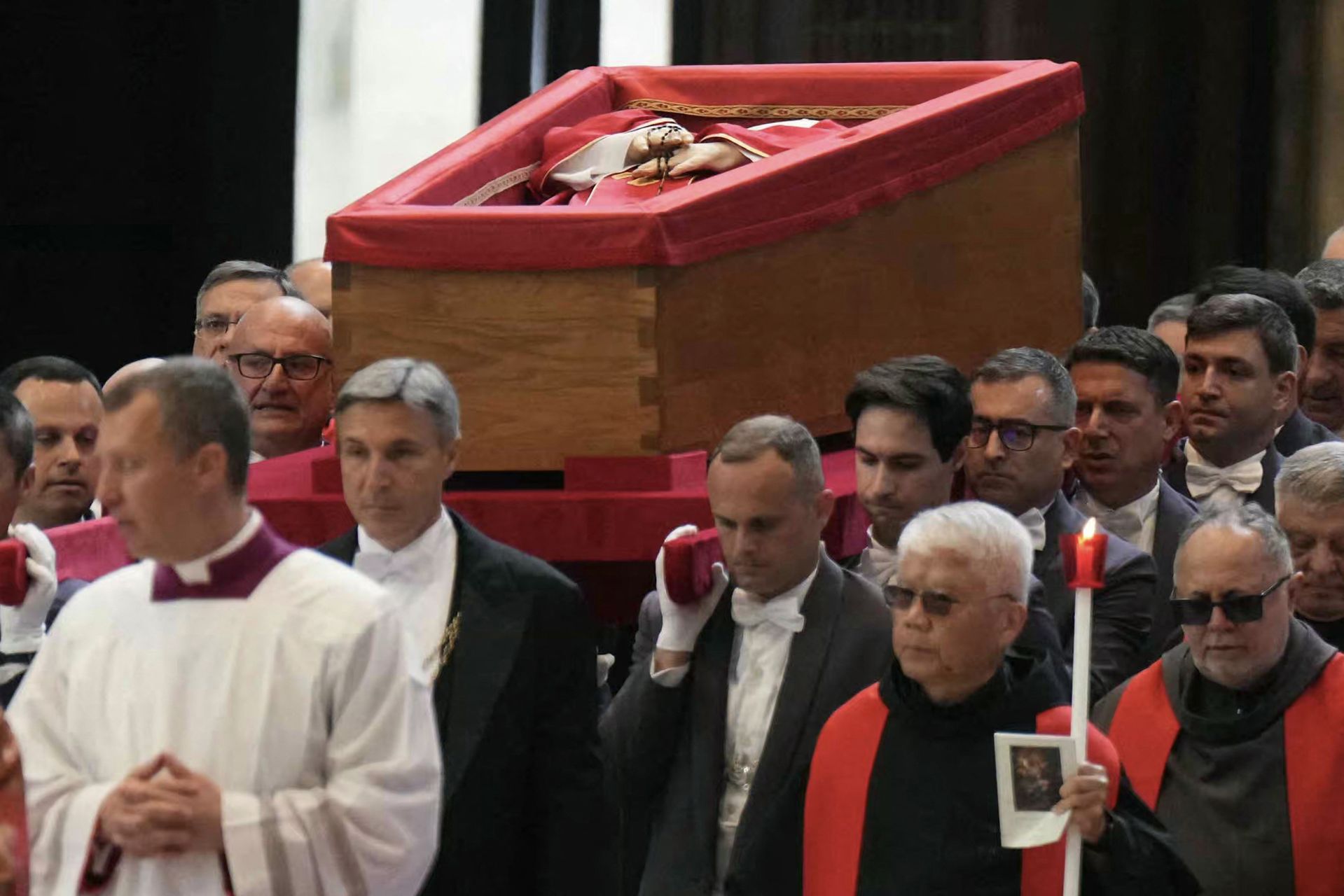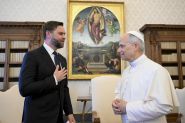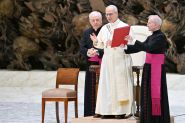- Home
- Arab World
- What We Know Ahead of Pope Francis’s Funeral

Pallbearers carry the coffin of the late Pope Francis inside St Peter's Basilica as it is transported in a procession from the chapel of Santa Marta to St Peter's Basilica, following the Pope's death, in the Vatican on April 23, 2025. ©Dimitar DILKOFF / AFP
Pope Francis, who died this week at age 88 of a stroke at the Vatican, will be buried on Saturday.
World leaders and worshippers will be present at his funeral before a conclave of cardinals is convened to elect a successor.
Here's what we know about the processes leading up to the election of a new pope.
Lying in state
Francis's body was taken on Wednesday morning to lie in state in St Peter's Basilica, where mourners were able from 11:00 am (0900 GMT) to pay their respects to the late pontiff.
His open coffin -- which he had previously ordered to be made of wood and zinc -- was placed on a simple wooden bier before the basilica's altar, instead of the more ornate podiums used for his predecessors.
It will remain there for three days.
From Monday evening until its transfer to the basilica, his coffin was lying inside the chapel of the Casa Santa Marta residence where he had lived during his 12-year papacy.
From there it was carried by pallbearers in a colourful procession that included cardinals, bishops, monks and nuns.
Funeral
Francis's funeral will take place at 10:00 am (0800 GMT) on Saturday in the square in front of St Peter's Basilica.
The coffin will then be taken back inside before being taken to Rome's basilica of Santa Maria Maggiore for burial.
World leaders and faithful from across the globe are expected to flock to Rome to attend the ceremony and pay their respects to the leader of the world's 1.4 billion Catholics.
US President Donald Trump, Ukraine's Volodymyr Zelensky and Britain's Prince William are among those to have said they would attend.
Authorities expect up to 170 foreign delegations and some 200,000 visitors, which will require a major security operation.
Conclave
The starting date of the conclave, during which 135 so-called "cardinal electors" will choose Francis's successor, is not yet known.
But it should begin no less than 15 and no more than 20 days after the death of the pope -- thus between May 5 and May 10.
The cardinals will meet in the Sistine Chapel, a Renaissance jewel adorned with Michelangelo's celebrated frescoes, and hold four ballots a day -- two in the morning and two in the afternoon -- until one candidate wins two-thirds of the votes.
At the end of each session, the ballots are burned in a stove by the chapel, releasing smoke above the Apostolic Palace as the world watches.
If black smoke billows from a chimney overlooking St Peter's Square, the vote has been unsuccessful.
White smoke signals a new pope has been elected.
Camerlengo
The camerlengo is the senior cardinal who runs the Vatican's day-to-day operations between the death of one pope and the election of his successor.
Irish-born Cardinal Kevin Farrell is the current camerlengo.
Part of his role is to lead the cardinal meetings, known as "general congregations", where decisions are made about the pope's funeral and the upcoming conclave.
He is the only top Vatican official to retain his position following the death of a pope.
The rest of the Vatican's Roman Curia are obliged to resign following the pope's death.
A first general congregation of some 60 cardinals took place on Tuesday when the funeral date was chosen. A second meeting was due on Wednesday afternoon.
Fatal stroke
Francis died of "cerebral stroke, coma, irreversible cardiocirculatory collapse", according to a death certificate released by the Vatican, which announced his death early on Monday morning.
With AFP
Read more



Comments